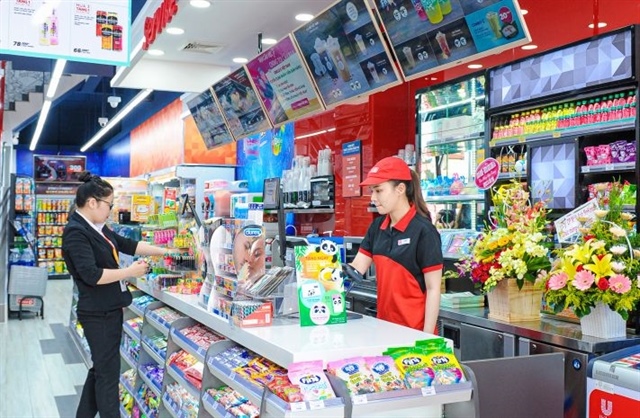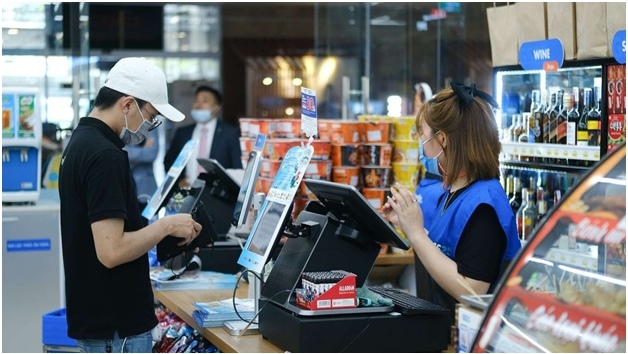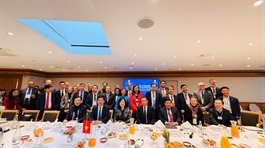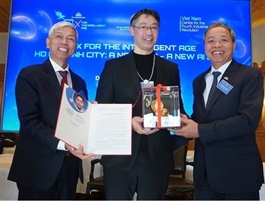Convenience stores struggle to make profit
Convenience stores struggle to make profit
The convenience store segment in Việt Nam's retail market is dominated by foreign chains and is barely profitable.

A Circle K convenience store in Cần Thơ City. Circle K was the first foreign convenience store chain to enter Việt Nam, in 2008. — Photo circlek.com.vn |
Profitability has been a major challenge for convenience store chains in Việt Nam, as most of them endure losses as they struggle to find a sustainable business model and capture market share.
There is no consistent data on the number of convenience stores in Việt Nam, as different research firms use varying standards to define convenience stores.
Data from the market research company Q&Me indicated that as of March 2023, there were approximately 3,720 convenience stores nationwide. Of these, 2,600 stores were located in HCM City, and the rest spread across Hà Nội, Đà Nẵng, Bình Dương and other regions.
However, according to a report released in September last year by the consulting firm B&Company from Japan, there were only 1,374 convenience stores in Việt Nam.
According to classifications by the Ministry of Industry and Trade, mini supermarkets must have an area of at least 80 square metres and at least 500 stock keeping units (SKUs). Convenience stores must be from 30 to 200 square metres in size and serve customers within a 500-metre radius.
In terms of market share, a survey by Nielsen Vietnam at the end of 2023 showed that Circle K holds 48 per cent of the market share by revenue, followed by FamilyMart (18.8 per cent), Ministop, 14.3 per cent and then 7-Eleven stores, at 7.3 per cent. This indicated that the convenience store segment in Việt Nam was being dominated by foreign chains.
In 2008 Circle K was the first foreign convenience store chain to arrive in Việt Nam. By the end of last year, the chain had 476 stores, operating 24/7 and offering home delivery via food delivery apps.
Family Mart entered the market in 2009, followed by Japanese convenience store chain Ministop in 2015 and 7-Eleven in 2017.
Thai-owned chain B’s Mart has been in Việt Nam since 2013 and initially, the company expressed a wish to open 150 stores, but at the moment only 84 stores are in operation, mostly in HCM City.
In 2018, the South Korean chain GS25 entered the market and it rapidly expanded. In August 2023, the International Finance Corporation (IFC) Seoul invested US$20 million into the chain to support its expansion plan over the next two years. GS25 now has 355 stores in Việt Nam, according to the Korea Times.
Hardly profitable
According to the Ministry of Industry and Trade's forecast, the size of Việt Nam’s retail market may reach US$350 billion by 2025, contributing to 59 per cent of the national budget.
Nevertheless, accepting losses to capture market share has almost become a common strategy for most chains. Intense competition in both the general retail sector and the convenience store segment has made it hard to make a profit.
GS25 is considered a prime example of using this strategy. Entering the market later than its Japanese and Thai competitors, the chain set a goal of opening 2,500 stores by the end of 2027, ten years after entering Việt Nam.
However, in 2023, the company reported a loss of $4 million, though this was down from the $6.7 million loss in 2022. As a result, GS25 adjusted the original plan and aimed for just 500 stores by 2025 and 700 stores by 2027 – which is only 28 per cent of the original target – despite being backed by a $20 million investment from the International Finance Corporation.

A Circle K convenience store in Cần Thơ City. Circle K was the first foreign convenience store chain to enter Việt Nam, in 2008. — Photo circlek.com.vn |
Family Mart had similar ambitions, but in 2023 it registered a loss of $400,000.
For Ministop and 7-Eleven, although revenues increased in 2023 by 12 per cent and 37.4 per cent, respectively, there was also no profit. Ministop incurred a $2 million loss, doubling the previous year’s, while 7-Eleven faced a loss of $4 million.
Circle K and K-Market are the only two brands that have registered profits in the market in recent years.
In 2022, Circle K reported its strongest revenue growth, reaching $160 million and overcoming two years of accumulated losses. It is the only foreign convenience store chain to report profits exceeding $4 million that year, according to a report by Vietdata published in July 2024.
The K-Market chain achieved modest profits in the years of 2022 and 2023, after 18 years of operation in Việt Nam.
According to Đỗ Duy Thanh, director of FnB Director, a consulting firm for restaurants and food chains, since convenience stores typically target individual customers seeking convenient and fast services, their sales can't be very high. Profit is a major challenge for chains with few locations and small stores.
“There's a lack of financial resources, and there are challenges in terms of the supply chains since they struggle to secure good prices and sourcing quality goods," Thanh said.
The average gross profit margin for retail models is around 20-25 per cent, according to Thanh. For example, a net revenue of VNĐ1 billion (nearly $40,000) per month, after subtracting the cost of goods sold, would result in a gross profit of VNĐ200-250 million ($8,000-10,000).
If the monthly revenue is VNĐ500 million, the gross profit would be VNĐ100-125 million. "If you rent a space for VNĐ40 million and have to pay for utilities, security and labour costs, there wouldn’t be much profit," Thanh said.
The mini-supermarkets that Thanh’s company advises and builds for clients in apartment buildings typically have monthly sales of VNĐ300-500 million, he added. "The profit margin is very thin, but if managed well, it can still be viable," he said.






















